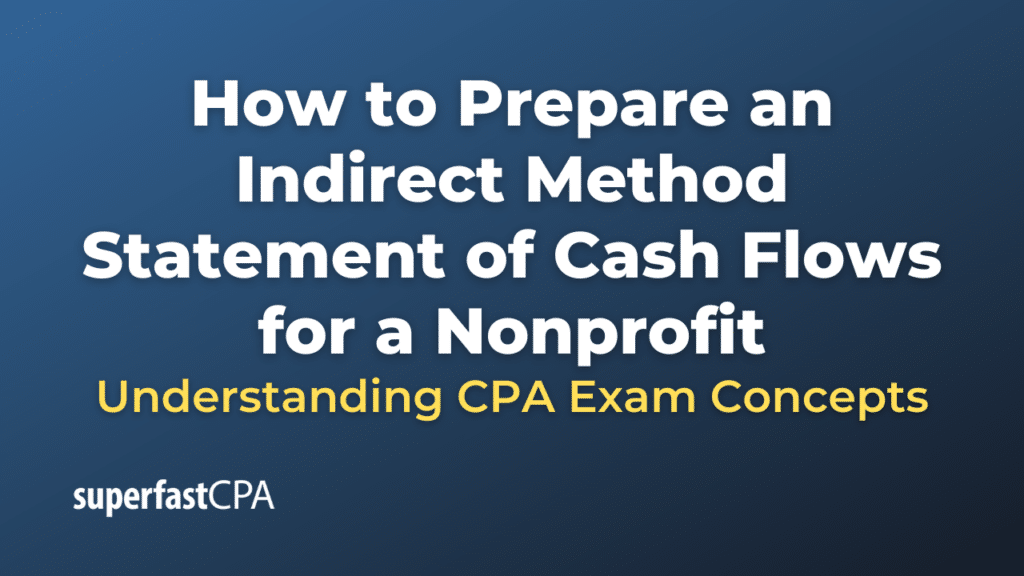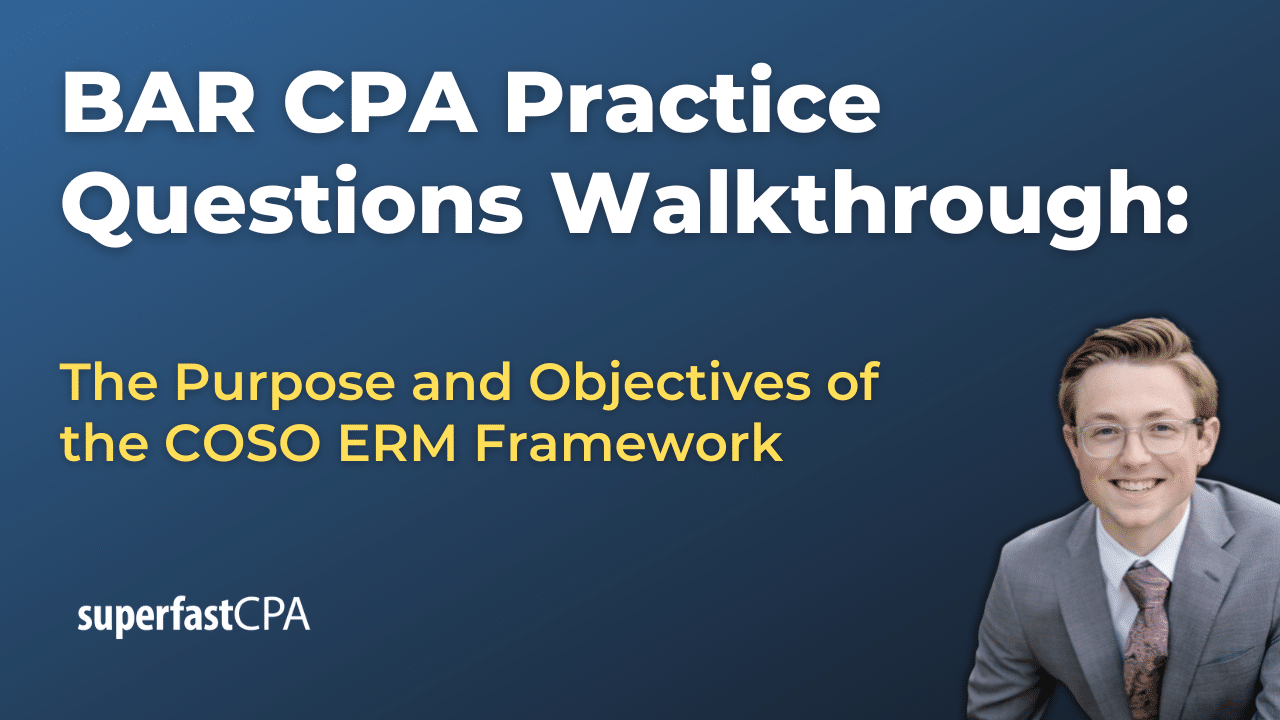Introduction
Definition of a Cash Flow Statement and Its Importance for Nonprofits
In this article, we’ll cover how to prepare an indirect method statement of cash flows for a nonprofit. A cash flow statement is a crucial financial report that traces the flow of cash into and out of an organization over a specific period. For nonprofits, this statement provides vital transparency and accountability, showcasing how effectively the organization manages its cash to support its mission and operations. It highlights the sources of the organization’s cash and how those funds are spent, which is essential for stakeholders like donors, grantmakers, and regulatory bodies who are keenly interested in the stewardship and sustainability of the organization.
The cash flow statement helps nonprofit managers make informed financial decisions, ensuring that there is enough liquidity to meet obligations and support ongoing programs. It also aids in planning for future financial needs, understanding cash cycles, and maintaining fiscal responsibility, which is particularly crucial for nonprofits that must justify their tax-exempt status by demonstrating prudent use of funds.
Brief Overview of the Direct vs. Indirect Method of Reporting
When preparing cash flow statements, nonprofits can choose between two accounting methods: the direct and the indirect method. Both methods arrive at the same total amount of cash generated or used but differ in presentation and detail.
Direct Method: This method lists major classes of gross cash receipts and payments. Under this approach, the statement is straightforward and easy to understand as it directly shows cash flows from operating activities, including sources and uses of cash. This method is less common among nonprofits, primarily because it requires detailed tracking and reporting of actual cash transactions, which can be more labor-intensive.
Indirect Method: The indirect method, preferred by most nonprofits, starts with the net income from the statement of activities (adjusted for any non-cash revenue and expenses) and reconciles to net cash provided by or used in operating activities. This method adjusts net income for changes in balance sheet accounts to reflect the cash transactions. The adjustments include changes in accounts receivable, supplies inventory, prepaid expenses, accounts payable, and accrued expenses. This method provides a link between the balance sheet and the income statement and offers a more nuanced view of cash flow that is less about specific cash transactions and more about overall financial position changes.
Both methods are accepted under accounting standards, but the indirect method often provides additional insights into the organization’s operating performance and financial health, making it highly valuable for strategic planning and internal decision-making in the nonprofit sector.
Understanding Nonprofit Accounting Basics
Key Differences Between Nonprofit and For-Profit Accounting
Accounting for nonprofit organizations significantly differs from for-profit businesses in several key areas, reflecting the unique goals, structures, and regulatory environments of each sector.
Purpose and Revenue Recognition: Nonprofits are mission-driven rather than profit-driven, focusing on providing public benefits without distributing earnings to owners or shareholders. This fundamental difference affects how revenues are recognized and reported. For nonprofits, revenue is often recognized when funds are received in the form of donations, grants, and fundraising, even if these are intended for future use.
Net Assets Classification: In nonprofit accounting, the equity section of the balance sheet is not referred to as “equity” but as “net assets.” These are classified into three categories: unrestricted, temporarily restricted, and permanently restricted, each indicating the level of donor-imposed restrictions on the use of the funds.
Financial Statements: Nonprofits produce a statement of financial position (similar to a balance sheet), a statement of activities (similar to an income statement), and a statement of cash flows. Additionally, they prepare a statement of functional expenses that breaks down costs by program service, management and general activities, and fundraising, highlighting how resources are used toward fulfilling the nonprofit’s mission.
Overview of Fund Accounting, Restricted vs. Unrestricted Funds
Fund Accounting: This is a method of segregating financial resources into categories (funds) to identify both the source of funds and the intention for their use. Fund accounting allows nonprofits to track and report on specific pools of funds, ensuring that certain resources are used only for their intended purposes as specified by donors or governing boards.
Restricted vs. Unrestricted Funds:
- Unrestricted Funds are resources that can be used at the discretion of the organization’s management for any legitimate purpose. These funds are vital for covering overhead costs, such as administration and other non-direct program expenses that are not usually covered by restricted donations.
- Temporarily Restricted Funds are resources that must be used within a certain period or for a particular purpose as specified by the donor. Once the time limit expires or the purpose is fulfilled, these funds can be reclassified as unrestricted.
- Permanently Restricted Funds are resources that must be maintained indefinitely; only the income generated by these funds can be used, typically for a specified purpose. Common examples include endowment funds where the principal must remain intact.
Understanding these fundamentals of nonprofit accounting is crucial for anyone involved in the financial management or oversight of a nonprofit organization. It ensures compliance with accounting standards and donor restrictions, and supports effective and transparent financial reporting.
Preparation Steps Before Drafting the Statement
Proper preparation is essential in creating an accurate and meaningful statement of cash flows using the indirect method. Before drafting the statement, nonprofit financial managers need to gather pertinent financial documents and identify the appropriate starting point for the statement. This foundational work ensures that the cash flow statement reflects a true and clear picture of the organization’s liquidity over the period.
Gathering Necessary Financial Documents
The first step in preparing the statement of cash flows is to gather all necessary financial documents. These documents provide the data needed to construct the statement and ensure that all financial activities are accounted for accurately. Key documents include:
- Balance Sheet (Statement of Financial Position): This provides a snapshot of the organization’s assets, liabilities, and net assets at the beginning and end of the period. Changes in these items influence the cash flow from operations and financing activities.
- Income Statement (Statement of Activities): This shows the revenues earned and expenses incurred during the period. It helps in identifying non-cash transactions that need to be adjusted in the cash flow statement.
- Previous Year’s Cash Flow Statement: Reviewing the previous period’s cash flow statement can provide insights into the typical sources and uses of cash and highlight any recurring non-cash transactions.
- Transaction Ledgers and Journals: These detailed records contain information on all transactions that have impacted the organization’s finances, offering a more granular look at cash flows that might not be obvious from summary-level reports.
Identifying the Starting Point: The Net Income or Change in Net Assets
The next crucial step is to identify the starting point for the cash flow statement, which, in the indirect method, is the net income or change in net assets as reported on the income statement.
- Net Income/Change in Net Assets: This figure represents the total change in the organization’s financial position resulting from operational activities, excluding the effects of pure cash transactions. It includes all revenues received and expenses incurred, regardless of whether they involved actual cash flows.
For nonprofit organizations, this starting point needs to be adjusted for any non-cash revenue (such as in-kind donations) and expenses (like depreciation or amortization), as these do not affect the organization’s actual cash flow. Additionally, any changes in net assets that result from restrictions being lifted or imposed must also be considered to adjust the net income to the net cash provided by operating activities.
By carefully preparing and reviewing these initial steps, nonprofit financial managers set the stage for a detailed and accurate indirect method cash flow statement that will effectively communicate the organization’s cash inflow and outflow to stakeholders.
Key Components of the Indirect Method
The indirect method of preparing a statement of cash flows involves several critical adjustments to convert net income from the accrual basis to the cash basis. This section discusses two main types of adjustments: those for non-cash transactions and those related to changes in operating assets and liabilities. These adjustments are essential for accurately reflecting the organization’s cash flows during the reporting period.
Explanation of Adjustments for Non-Cash Transactions
Non-cash transactions are significant because they affect the net income reported on the income statement but do not impact the actual cash flow. Adjusting for these items is crucial in the cash flow statement to ensure it accurately reflects only the cash items. Common non-cash adjustments include:
- Depreciation and Amortization: These expenses reduce net income but do not decrease cash; thus, they are added back to net income in the cash flow statement.
- Gains and Losses on Asset Sales: When an asset is sold, the gain or loss on the sale is reported on the income statement but the actual cash received from the sale is a separate item. Losses are added back and gains are subtracted from net income because the cash effect of the sale is shown separately in the investing activities section.
- In-kind Contributions: Donations of goods or services are recorded as revenue and as expense or asset when received, but they do not involve cash. Therefore, these are adjusted out of the net income.
- Stock-based Compensation: This type of compensation is an expense on the income statement but does not involve an outlay of cash, so it is added back to net income.
Details on Adjustments for Changes in Operating Assets and Liabilities
Changes in operating assets and liabilities from the balance sheet also require adjustments because they affect cash flow differently than how they impact net income. These adjustments ensure that the cash flow statement reflects actual cash received or paid out during the period:
- Accounts Receivable: An increase in accounts receivable represents sales that have not yet been collected in cash, thus reducing cash flow. Conversely, a decrease indicates collections exceeding sales, thus increasing cash flow. Therefore, increases are subtracted from and decreases are added to net income.
- Inventory: An increase in inventory consumes cash but does not affect net income (unless impaired), so it is subtracted. A decrease releases cash, which is then added to net income.
- Prepaid Expenses: Increases in prepaid expenses are cash outflows not yet recorded as expenses, so they are subtracted from net income. Decreases are added as they reflect prior cash outflows now being recognized as expense.
- Accounts Payable and Accrued Liabilities: An increase in these accounts indicates expenses incurred without a corresponding cash outlay, increasing cash flow; thus, such increases are added to net income. Decreases are subtracted as they represent cash payments for expenses previously recognized.
These adjustments are fundamental in the indirect method, converting the accrual basis net income into the cash basis net cash provided by (or used in) operating activities. By understanding and applying these adjustments, nonprofits can ensure their cash flow statements accurately reflect their financial health and liquidity.
Step-by-Step Guide to Creating the Statement
Step 1: Adjusting Net Income for Non-Cash Revenue and Expenses
Creating an accurate statement of cash flows using the indirect method begins with adjusting the net income to account for non-cash transactions. These adjustments are necessary to isolate the actual cash effects from the accrual-based figures reported in the income statement. Here’s how to approach this crucial first step:
- Start with Net Income: Begin with the net income (or change in net assets for nonprofits) as reported on the income statement. This figure includes all the revenues earned and expenses incurred, regardless of whether or not cash has changed hands.
- Add Back Non-Cash Expenses: Identify all expenses that have reduced net income but did not involve an outlay of cash. Common non-cash expenses include:
- Depreciation and Amortization: Since these are accounting entries that allocate the cost of tangible and intangible assets over their useful lives without actual cash outflow, add these amounts back to net income.
- Provision for Doubtful Debts: Similar to depreciation, this is an estimate of potential non-collection of receivables and does not involve a cash outflow, so it should be added back.
- Subtract Non-Cash Revenues: Remove any revenues that have increased net income but have not resulted in an immediate cash inflow. These can include:
- In-kind Contributions: If the nonprofit records donations of goods or services as revenue, these amounts should be subtracted from net income since they do not provide cash.
- Unrealized Gains: Any gains from investments that have not been sold (and thus have not generated cash) must also be subtracted.
- Adjust for Gains or Losses on Sale of Assets: If there are any gains or losses from the sale of assets included in the net income, these need to be corrected for:
- Subtract Gains on Sale of Assets: Since the gain inflates net income but the cash from the sale is shown separately in investing activities, the gain should be subtracted.
- Add Back Losses on Sale of Assets: Conversely, any losses reduce net income but do not affect cash until the asset is actually sold, so these should be added back.
This first step is critical as it adjusts the starting figure (net income) to reflect only the operations that have affected the organization’s cash during the period. These adjustments ensure that the subsequent steps in the cash flow statement preparation start from an accurate depiction of the cash impacts of the organization’s activities.
Step 2: Accounting for Changes in Operating Asset and Liability Accounts
The next critical step in preparing the statement of cash flows using the indirect method involves adjusting the starting cash figure (adjusted net income) for changes in operating assets and liabilities. This step is crucial for translating the accrual-based net income into a cash-based figure that accurately reflects the actual cash inflows and outflows during the reporting period.
- Analyze Changes in Operating Assets: Review the balance sheet to identify changes in operating asset accounts from the beginning to the end of the period. For each type of asset, make the following adjustments:
- Accounts Receivable: If accounts receivable have decreased, this indicates that more cash has been collected from customers than sales recorded on an accrual basis, adding to cash inflows. Conversely, an increase in accounts receivable shows that sales on credit have exceeded cash collections, decreasing cash inflows. Therefore, decrease in accounts receivable should be added to the net income, and increase should be subtracted.
- Inventory: A decrease in inventory suggests that more inventory has been sold than purchased, releasing cash, hence should be added to net income. An increase means cash has been used to purchase additional inventory, which should be subtracted from net income.
- Prepaid Expenses: An increase in prepaid expenses represents cash outflow that has not yet been expensed, so subtract this from net income. A decrease reflects prior cash outlays now being expensed, and should be added back.
- Evaluate Changes in Operating Liabilities: Examine any changes in operating liabilities as these indicate timing differences between when expenses are incurred and when they are paid:
- Accounts Payable: An increase in accounts payable suggests that the company has incurred expenses for which it has not yet paid, which conserves cash. Thus, add increases in accounts payable to net income. A decrease indicates that payments on these liabilities have exceeded the expenses incurred, which uses cash, so this should be subtracted from net income.
- Accrued Expenses: Similarly, an increase in accrued expenses (such as wages, taxes, or interest) adds to net income since these are expenses recognized but not yet paid, deferring cash outflow. A decrease means cash has been spent to settle accrued liabilities, so subtract this from net income.
- Deferred Revenue: An increase in deferred revenue reflects cash received in advance of revenue recognition, adding to cash inflows. Decrease should be subtracted as it indicates revenue recognition catching up to cash received.
By carefully analyzing and adjusting for these changes in operating assets and liabilities, nonprofits can ensure that their cash flow statements accurately reflect the operational liquidity and cash management during the reporting period. These adjustments are essential for stakeholders to understand the true cash position and its implications for the organization’s financial health and sustainability.
Step 3: Including Supplemental Information such as Cash Paid for Interest and Taxes
The final step in drafting a comprehensive statement of cash flows using the indirect method involves including supplemental information that provides further insights into the financial activities of the nonprofit. This includes specific details on the cash paid for interest and taxes, which are significant because they reflect actual cash transactions affecting the financial health of the organization.
- Identify Cash Paid for Interest and Taxes:
- Interest: Even though interest expense may be included in the calculation of net income, it’s important to show separately the actual cash amount paid for interest during the period. This adjustment is necessary because the interest expense recognized in the income statement might be different from the actual interest payment due to timing or accruals. Typically, this amount is added back to net income in earlier adjustments and then deducted out in the cash flow from financing activities section to show the true cash outlay.
- Taxes: Similar to interest, taxes paid may differ from the tax expense shown on the income statement due to differences in tax accounting and financial accounting rules, as well as timing differences in tax payments. It’s essential to report the actual cash paid for taxes during the period, which involves adding back the tax expense to net income (if not already cash-based) and then listing the actual cash paid under operating activities.
- Disclosure of Non-Cash Investing and Financing Activities:
- Beyond interest and taxes, it’s also crucial to disclose significant non-cash transactions that do not affect cash flow but are important for understanding the organization’s financial operations. These may include:
- Issuance of Debt or Equity in Exchange for Assets: Sometimes, nonprofits may acquire assets by issuing debt or equity rather than through direct cash payments.
- Conversion of Liabilities to Equity: This includes scenarios where debt or other obligations are converted into an equity interest in the nonprofit.
- In-kind Donations of Fixed Assets: Large non-cash donations such as property or equipment should be disclosed to inform stakeholders about resources that the organization has received which could impact future cash flows.
- Beyond interest and taxes, it’s also crucial to disclose significant non-cash transactions that do not affect cash flow but are important for understanding the organization’s financial operations. These may include:
- Format of the Supplemental Disclosure:
- These items should be presented in a separate section of the cash flow statement or in the notes accompanying the financial statements. The disclosure should provide clear and detailed information about each item, ensuring that stakeholders understand the nature of these transactions and their implications for the organization’s financial status.
Including supplemental information such as cash paid for interest and taxes, along with significant non-cash investing and financing activities, enhances the transparency and completeness of the cash flow statement. This step not only complies with accounting standards but also provides stakeholders with a clearer picture of the nonprofit’s cash flows and financial commitments, aiding in more informed decision-making.
Common Challenges and Tips
Identifying and Adjusting Unusual or Infrequent Transactions
In the preparation of a cash flow statement using the indirect method, nonprofit organizations often encounter unusual or infrequent transactions that can complicate financial reporting. These transactions may not recur in the normal course of business and can significantly impact the accuracy of financial analysis if not properly adjusted.
Challenges:
- Recognition and Classification: Unusual or infrequent transactions might include items like large one-time donations, special grants, or the sale of an asset. These transactions can be difficult to classify because they do not fit neatly into regular revenue or expense categories.
- Impact on Cash Flow: Such transactions can skew an understanding of the organization’s ongoing cash flows, making it appear more or less stable than it actually is.
Tips:
- Separate Identification: Clearly identify and separate these transactions within the financial records. This separation will aid in the transparent reporting and analysis of cash flows, ensuring that stakeholders understand the nature and impact of these transactions.
- Use of Notes: Employ notes to the financial statements to describe the nature, timing, and financial impact of unusual or infrequent transactions. This helps maintain the integrity of the cash flow statement while providing all necessary disclosures.
Handling Donor-Restricted Funds and Their Impact on Cash Flow
Donor-restricted funds are another area where nonprofits face challenges in cash flow management and reporting. These funds are donated for specific purposes or times, and their use is restricted by donor stipulations.
Challenges:
- Liquidity Management: While donor-restricted funds can increase the total cash available, they do not increase the unrestricted cash that is crucial for day-to-day operations. This can lead to liquidity issues if not managed carefully.
- Recognition in Cash Flow: The timing of the recognition of these funds as revenue can affect the cash flow statement, as they are recognized when the restriction is met, not necessarily when the cash is received.
Tips:
- Proper Tracking and Segregation: Maintain meticulous records of restricted and unrestricted funds. This practice not only aids in legal and ethical compliance but also ensures accurate financial reporting.
- Use of Separate Accounts: Consider using separate bank accounts for restricted funds to simplify tracking and ensure compliance with donor restrictions.
- Regular Review of Restrictions: Review the terms of restricted donations regularly to determine when funds can be recognized as revenue based on the satisfaction of donor-imposed conditions.
By addressing these common challenges with strategic approaches and careful financial management, nonprofits can enhance the accuracy of their cash flow statements and improve their overall financial health. These practices ensure that both unusual or infrequent transactions and donor-restricted funds are managed and reported in ways that align with both accounting standards and organizational needs.
Case Study Example
Walkthrough of a Simplified Example of a Nonprofit’s Cash Flow Statement Preparation
To illustrate how a nonprofit organization might prepare its cash flow statement using the indirect method, let’s consider a fictional nonprofit, “Green Horizon,” which focuses on environmental conservation. We will walk through the preparation of the cash flow statement for the fiscal year.
Initial Data:
- Net Income for the year: $100,000
- Depreciation Expense: $10,000
- Increase in Accounts Receivable: $5,000
- Increase in Accounts Payable: $3,000
- Donation of Equipment (a non-cash transaction): $15,000
Step-by-Step Preparation:
- Start with Net Income: Begin with the net income from the income statement, which is $100,000.
- Adjust for Non-Cash Expenses:
- Add back Depreciation Expense: $10,000.
- Adjust for Changes in Working Capital:
- Subtract the increase in Accounts Receivable: -$5,000 (since more credit sales have been made than cash received).
- Add the increase in Accounts Payable: $3,000 (expenses on credit which have not yet been paid in cash).
- Consider Non-Cash Donations:
- Record the non-cash donation of equipment: This is noted in the supplemental information but does not affect the cash flow statement’s totals.
Calculation:
- Adjusted Net Cash Provided by Operating Activities = $100,000 + $10,000 – $5,000 + $3,000 = $108,000
Analysis of the Resulting Cash Flow Statement and Its Implications
Resulting Cash Flow Statement:
- Net cash provided by operating activities: $108,000
- Net cash used in investing activities: $0 (assuming no investments were made or assets sold, aside from the noted donation)
- Net cash used in financing activities: $0 (assuming no changes in debt or equity)
Implications:
- Sustainability and Efficiency: The positive net cash from operating activities indicates that Green Horizon is effectively generating more cash than it spends on its operational activities, which is a good indicator of financial health and sustainability.
- Impact of Non-Cash Transactions: The donation of equipment, while not affecting the cash flow, should be carefully considered in the context of the nonprofit’s capacity to utilize this asset to further its mission. This increases the asset base without affecting cash reserves, potentially improving long-term sustainability.
- Liquidity Issues: Despite a healthy net cash from operations, the increase in accounts receivable suggests a potential issue with liquidity if many donors or clients delay their payments.
By analyzing these components, stakeholders in Green Horizon can gain insights into the organization’s operational efficiency, financial health, and areas needing attention, such as collection policies or capital fund management. This case study illustrates how a cash flow statement prepared using the indirect method can provide valuable information beyond mere financial figures, supporting strategic planning and decision-making in nonprofit management.
Best Practices in Cash Flow Management for Nonprofits
Effective cash flow management is crucial for nonprofit organizations to ensure they have the necessary funds available to meet their mission-critical objectives. This section of the article will outline strategic recommendations for managing cash effectively and discuss the importance of regular cash flow analysis and forecasting.
Strategic Recommendations for Managing Cash Effectively
- Maintain a Cash Reserve: Nonprofits should aim to maintain a cash reserve equivalent to at least three to six months of operating expenses. This reserve acts as a financial buffer against unexpected events or fluctuations in income, such as delayed donations or grants.
- Monitor Cash Flow Regularly: Implement a system to monitor cash flows weekly or monthly. This allows the organization to identify cash shortfalls early and react accordingly. Utilize cash flow projections to anticipate inflows and outflows, ensuring that there are sufficient funds for upcoming expenses.
- Improve Collection Processes: Enhance the speed and efficiency of cash collections by streamlining invoicing processes, offering multiple payment options, and following up promptly on overdue accounts. Clear communication of payment terms and expectations with donors and clients is essential.
- Manage Payment Timing: While maintaining good relationships with suppliers and vendors, manage the timing of payments to optimize cash outflows. Take advantage of payment terms that allow for longer payment periods without incurring penalties.
- Plan for Major Expenses: Prepare for significant outlays, such as large projects or capital investments, by planning these expenses in advance. This includes setting aside funds specifically for these purposes and exploring financing options that do not strain daily operational cash flow.
- Utilize Financial Tools and Software: Leverage financial management software and tools that can help track and analyze cash flow. These tools can automate many aspects of financial management, providing regular insights and alerts about the financial status.
Importance of Regular Cash Flow Analysis and Forecasting
- Anticipates Future Needs: Regular cash flow analysis helps nonprofits understand their financial cycles and anticipate periods of tight liquidity or surplus. This understanding allows for better strategic planning and decision-making.
- Supports Budget Accuracy: By regularly comparing actual cash flows with budgeted figures, nonprofits can identify where they are over or under budget. This ongoing review leads to more accurate budgeting in future periods.
- Facilitates External Reporting and Fundraising: Accurate and up-to-date cash flow analysis supports transparency in financial reporting, which is crucial for maintaining donor trust and confidence. It also provides a solid foundation for fundraising efforts, as potential funders often review financial health indicators before making commitments.
- Enhances Strategic Decision Making: With regular cash flow forecasting, nonprofits can make informed decisions about growth opportunities, potential cutbacks, and other strategic moves. Forecasting also aids in risk management by identifying potential financial vulnerabilities early.
Adopting these best practices in cash flow management can significantly enhance a nonprofit’s ability to fulfill its mission effectively while maintaining financial stability and integrity. Regular analysis and strategic cash management are integral to a nonprofit’s success, enabling it to navigate the complexities of financial operations in the nonprofit sector.
Conclusion
Summary of Key Takeaways
Preparing a cash flow statement using the indirect method is an essential skill for nonprofit financial management. This article has guided you through the nuances of nonprofit accounting, the specifics of the indirect method, and the steps necessary to create an accurate statement of cash flows. Key takeaways include:
- Understanding Nonprofit Accounting: Recognize the differences between nonprofit and for-profit accounting, particularly in how net assets are categorized and how revenue recognition differs due to donor restrictions.
- Preparation and Documentation: Collecting and reviewing the necessary financial documents like the balance sheet and income statement is crucial before drafting a cash flow statement.
- Adjusting for Non-Cash Transactions and Working Capital Changes: It’s essential to adjust net income for non-cash transactions and account for changes in operating assets and liabilities to reflect the actual cash flow accurately.
- Including Supplemental Information: Providing details on cash paid for interest and taxes, along with disclosing non-cash transactions, enhances the transparency and usefulness of the cash flow statement.
- Managing Challenges: Be proactive in handling unusual or infrequent transactions and managing donor-restricted funds, which can significantly impact cash flow.
Encouragement for Continuous Learning and Adaptation in Financial Management
Financial management in the nonprofit sector is not static; it requires continual learning and adaptation to best practices and evolving standards. Nonprofits face unique challenges that demand a thorough understanding of both financial and operational strategies to sustain and advance their missions effectively. Encouraging continuous education and professional development in financial management can significantly benefit nonprofit leaders and staff.
Stay engaged with emerging tools and technologies that facilitate more efficient financial operations and provide deeper insights into financial health. Regularly attending workshops, seminars, and conferences on nonprofit financial management will also help keep your knowledge current and relevant.
Lastly, embrace the culture of financial transparency and accountability. This not only builds trust with donors, volunteers, and stakeholders but also strengthens the overall governance and strategic direction of your organization. By fostering an environment where financial knowledge and data-driven decision-making are prioritized, nonprofits can better navigate the complexities of their work and make a lasting impact on the communities they serve.
This guide provides a foundation, but the journey towards financial proficiency is ongoing. As you implement these practices, remain open to new ideas and innovations that can enhance your organization’s financial stability and mission effectiveness.
Further Resources
To enhance your understanding and efficiency in managing nonprofit finances, it is valuable to explore a range of educational resources and tools. Here are some recommended books, courses, and software that can provide deeper insights and practical skills in nonprofit financial management.
Books
- “Nonprofit Accounting & Financial Statements: Overview for Board, Management, and Staff” by Thomas R. Ittelson – This book is a clear guide to understanding and using financial statements and accounting in a nonprofit setting. It covers the fundamentals in a way that’s accessible for non-accountants.
- “Streetsmart Financial Basics for Nonprofit Managers” by Thomas A. McLaughlin – Focused on nonprofit managers, this book offers practical advice and concepts to help you understand and manage your organization’s finances, emphasizing decision-making and strategic planning.
- “Financial Management for Nonprofit Organizations: Policies and Practices” by John Zietlow, Jo Ann Hankin, and Alan G. Seidner – This comprehensive guide provides a detailed examination of financial management techniques specific to nonprofits, including budgeting, fundraising, investment strategies, and more.
Courses
- Nonprofit Financial Stewardship Webinar: Introduction to Accounting and Financial Statements – Offered by Harvard Kennedy School, this course helps nonprofit leaders understand the essentials of nonprofit financial information.
- Financial Management in Nonprofits – Coursera – Taught by faculty from the University of Illinois, this online course delves into budgeting, auditing, and monitoring nonprofit finances. It’s ideal for those looking to strengthen their financial decision-making skills.
- Nonprofit Accounting and Financial Statements – Udemy – This course offers practical, step-by-step guidance on creating and understanding financial statements in a nonprofit environment, ideal for new nonprofit financial officers or board members.
Software
- QuickBooks Nonprofit – Tailored specifically for nonprofits, QuickBooks Nonprofit provides tools to manage donations, fundraising events, and basic financial reporting, helping organizations track and report on their financial data efficiently.
- Sage Intacct – This cloud financial management platform offers robust accounting features that can handle the complexities of nonprofit financial management, including fund accounting, grant tracking, and compliance management.
- Blackbaud Financial Edge NXT – Designed exclusively for nonprofits, this software provides comprehensive fund accounting capabilities, ensuring that financial management aligns with the specific needs and compliance requirements of nonprofit organizations.
Exploring these resources will not only bolster your understanding of nonprofit financial management but also equip you with the skills to implement best practices effectively within your organization. Continuous learning and the use of specialized tools are key to maintaining the financial health and integrity of your nonprofit, enabling it to fulfill its mission more effectively.













